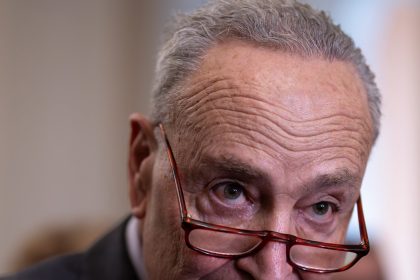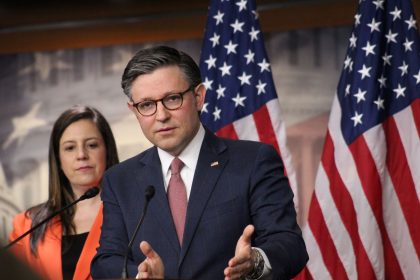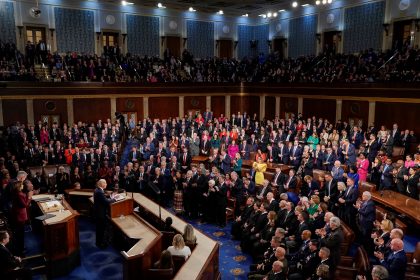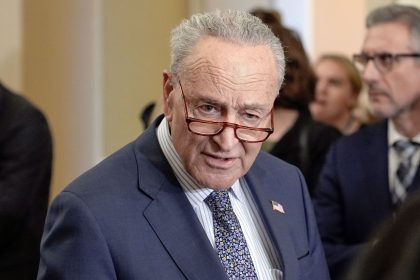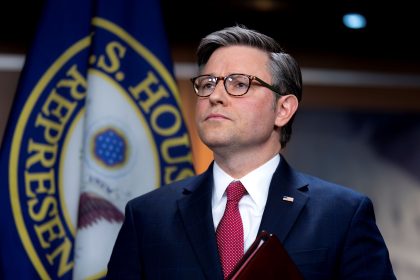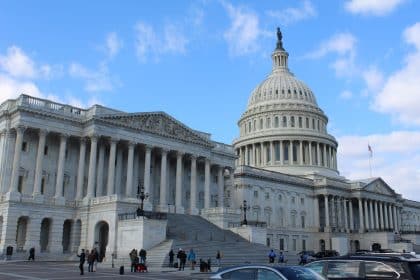Watchdogs: Trump’s Gimmicky $4.7 Trillion Budget Not Grounded In Reality
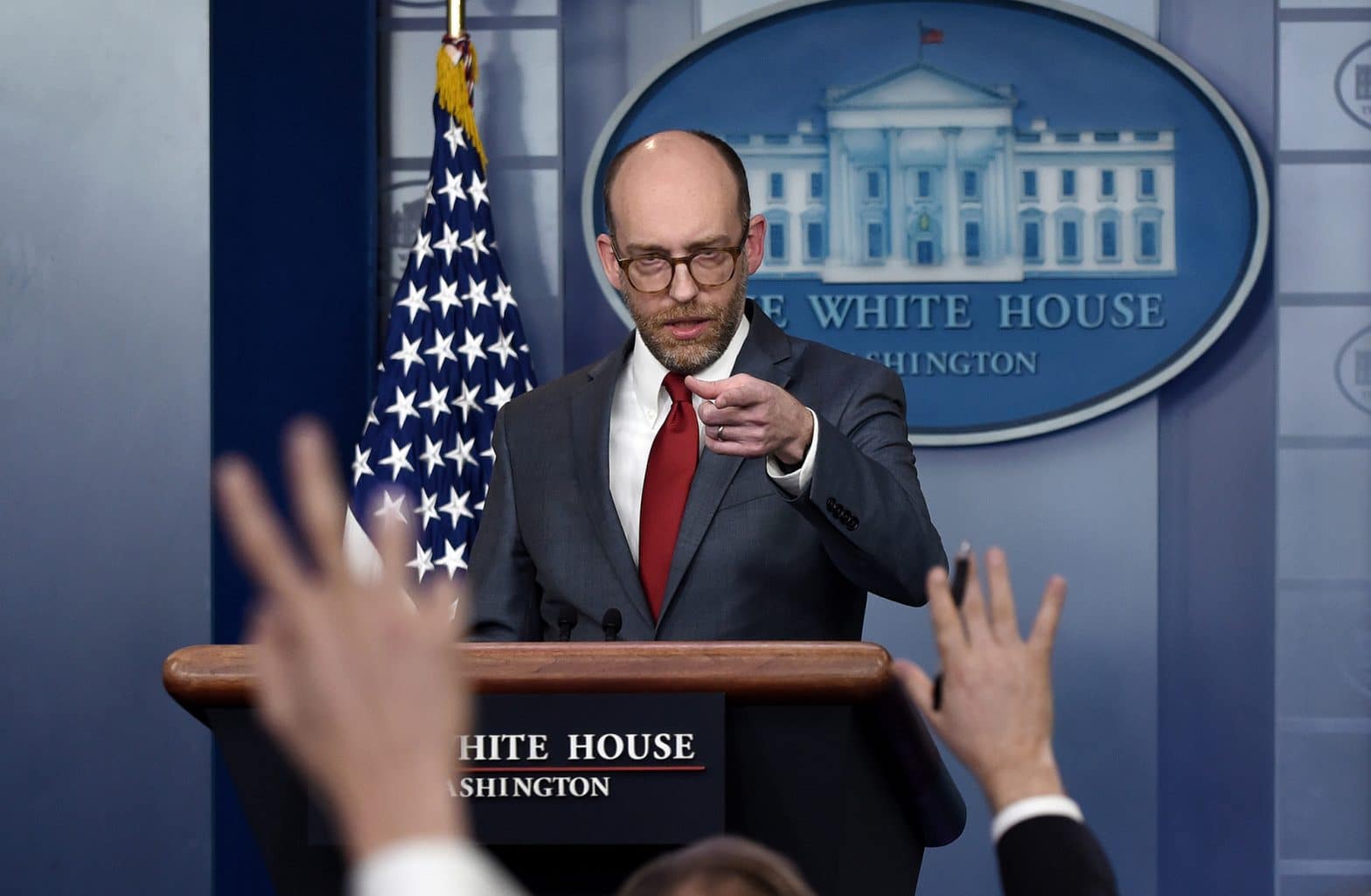
The $4.7 trillion federal budget for 2020 proposed by President Donald Trump on Monday, misses the mark on achieving meaningful deficit reduction while relying on accounting “sleight-of-hand” to bring future spending into promised balance in 15 years, according to a prominent fiscal watchdog group.
“Today’s proposal marks the beginning of the budget process, and it’s clear that there’s more work to do,” said Michael A. Peterson, CEO of the Peter G. Peterson Foundation, an independent organization whose purpose is to educate Americans about the dangers of the debt and other fiscal issues.
Although Peterson conceded the Trump spending plan “achieves some deficit reduction on paper,” he went on to say it utterly failed to address the key drivers of our debt and relies on unlikely assumptions.”
Titled “A Budget for a Better America: Promises Kept. Taxpayers First,” Trump’s budget proposes increasing defense spending to $740 billion and cutting $2.7 trillion in domestic and other non-defense spending over the next decade.
During his State of the Union address in February, the president said the nation is in the midst of “an economic miracle.” In a letter to Congress accompanying his spending plan, the president said the country must now focus on “turbocharging the industries of the future and establishing a new standard of living for the 21st century.”
Appearing on CNBC Monday morning, Russ Vought, acting director of the Office of Management and Budget, said the Trump plan “embodies fiscal responsibility” and that the administration has “prioritized reining in reckless Washington spending.”
But the proposed budget makes clear that the administration is relying on optimistic 3.1 percent economic growth projections to make its numbers work, even with the steep domestic cuts. However, many economists now project slower growth in the coming year, especially as the short-term bump in economic activity from the 2017 Republican tax cuts wanes.
It is currently projected that the deficit will rise to $1.1 trillion in the 2020 fiscal year, which would be the highest in a decade.
Peterson noted that “the vast majority of spending reductions are in non-defense discretionary programs, but this spending is not a driver of our growing debt and is already near historic lows as a share of GDP. Non-defense discretionary spending includes important investments for the future, such as education, transportation, and research and development.
“It’s always good to reduce ineffective or unnecessary programs, but these measures will not cure our structural deficits, and are also not politically feasible,” he said.
At the time, he added, “the deficit improvement in this budget relies on economic forecasts that exceed consensus estimates and CBO projections, and assumes consistent growth. One of the important reasons why we need to get our fiscal house in order is to be prepared for the next economic downturn.”
Peterson was not alone in these concerns.
Maya MacGuineas, president of the Committee for a Responsible Federal Budget, said the president “relies on far too many accounting gimmicks and fantasy assumptions and puts forward far too few actual solutions.”
“Even full of accounting gimmicks meant to paper over deficits, the President’s budget would still borrow $7.8 trillion over the next decade. Under reasonable economic assumptions, however, we find it would be closer to $10.5 trillion,” she said.
“Thoughtful Medicare, disability, and other proposals in the budget deserve serious debate, but these policies are overshadowed by inflated economic growth, unrealistic policy assumptions, and a failure to recognize the deep hole that policymakers have dug in recent years,” she continued. “If the past two years are any indication, this budget will be followed by more debt, not debt reduction.”
MacGuineas warned the debt load will lead to slower income growth, increased interest payments, and less opportunity.
She also lambasted Trump for relying on what she called “a fantasy assumption of sustained 3 percent economic growth for the U.S. economy.
“Every independent forecaster foresees growth to average closer to 2 percent over the next decade. Assuming an extra point of growth serves no purpose but to mask the high deficits and debt likely to materialize under the President’s budget,” she said.
The proposed spending plan includes funding for the president’s new Space Force as a military branch, and a 5 percent reduction in non-defense programs including cuts to the Environmental Protection Agency and safety-net programs relied on by many Americans.
Rep. John Yarmuth of Kentucky, Democratic chairman of the House Budget Committee, immediately shot down the proposed cuts to essential services, calling them “a dereliction of duty.”
Yarmuth, who previously said Trump saddled the American people with nearly $2 trillion to deficits through the GOP’s “tax cuts for the wealthy and large corporations,” suggested Monday the president’s latest budget proposal “once again lays out an irresponsible and cynical vision for our country, without any regard for its human cost.
“It lacks foresight and would leave our nation unable to meet our obligations to the American people, provide for our economic and national security, or responsibly plan for our future,” Yarmuth continued. “It does this all to protect deficit-financed tax cuts for millionaires and wealthy corporations while continuing to ask the American taxpayers to provide billions of dollars for a wasteful border wall the President promised would be paid for by Mexico.”
—
Related article | Trump Budget Sets Stage For Renewed Fight Over Border Wall Funding
—
Lauren Passalacqua, spokeswoman for the Democratic Senatorial Campaign Committee, previewed the political battles to come over the budget, saying the White House proposal “shows the GOP learned nothing from their defeat last November: it cuts $845 billion from Medicare, spikes America’s debt and slashes essential services — all while protecting taxpayer funded handouts to the wealthy and well connected.
“Voters rejected these wrong priorities during the last midterms and this budget adds even more baggage to Republicans’ sinking campaigns.” she said.
Others described the proposed budget as a call to action.
Rep. Lou Correa, D-Calif., co-chair of communications for the fiscally moderate Blue Dog Coalition in Congress noted that in the first four months of this fiscal year, the budget deficit increased by 77 percent and the national debt now stands at over $22 trillion, which he called “a troubling and unprecedented amount.”
“Developing a budget that is right for America should not be done in a partisan way, and both parties should work together,” he said. “In this era of divided government, the only way we will be able to resolve our fiscal problem is to pursue fiscally-responsible, bipartisan solutions.
“As Blue Dogs, we look forward to working with our Republican and Democratic colleagues to find a long-term, comprehensive solution that responsibly balances America’s budget and puts our country on a fiscally-sustainable path. Our children and grandchildren are depending on us to make the right decisions and get this done,” he said.
The administration said it wants to spend more than $80 billion for veterans services — a 10 percent increase from current levels — with investments in rehabilitation and suicide prevention.
The spending plan includes $291 million to “defeat the HIV/AIDS epidemic,” and $1 billion for a child care fund championed by the president’s daughter Ivanka Trump to improve access to care for underserved populations.
The proposal also provides $200 billion toward infrastructure, much lower than the $1 trillion plan Trump once espoused.
The president has resisted making a bipartisan deal that would breach existing budget caps, but Congress will likely need to hash a new agreement on spending levels to avoid another federal shutdown in fall.
To stay within the caps, the president shifts $165 billion of the defense spending to an overseas contingency fund specified for fighting wars, which watchdogs like Peterson view as “accounting sleight-of-hand.”
“This approach lacks transparency and evades the normal budget process, and has rightly been criticized by leaders in both parties,” he said.
For her part, MacGuineas said the White House use of what she called the ‘”Overseas Contingency Operations gimmick” is not new, “but the proposed abuse of this account rises to a new level never before seen and sets a dangerous precedent.”
Travis Sharp, a research fellow at the Center for Strategic and Budgetary Assessments, an independent, nonpartisan policy research institute, said even without the gimmickry, the president’s proposed defense spending will be closely scrutinized on Capitol Hill for a number of reasons.
First, is the fact the president repeatedly changed his mind on the size of the increase as the Pentagon prepared its budget. At one point, Sharp said, the topline was $733 billion, then $700 billion, and finally, $750 billion.
“This toing and froing forced DoD to prepare multiple budgets, leaving less time for other priorities,” he said.
The result was a final proposal that is something less than a carefully-crafted plan. “Congress will ask which funds are essential to the strategy – and which funds DoD added to satisfy the president’s last-minute call for more money,” Sharp said.
He noted that typically, dollars and deployments move in unison. With the U.S. military presence in Afghanistan and Syria shrinking, “Some members of Congress will ask, ‘What happened to the peace dividend?’”
Trump’s budget would also re-open two health care battles he lost in his first year in office: repealing the Affordable Care Act and limiting future federal spending on Medicaid for low-income people.
Under the budget proposal, both programs would be turned over to the states starting in 2021.
“Budgets are general policy frameworks that represent the priorities of the nation,” Michael Peterson said. “As the budget process begins, now is the time to begin discussions on ways to come together so that we can avoid another damaging government shutdown. The administration and Congress should commit themselves to more effective budgeting to put the nation on a secure fiscal foundation for economic growth.”

















